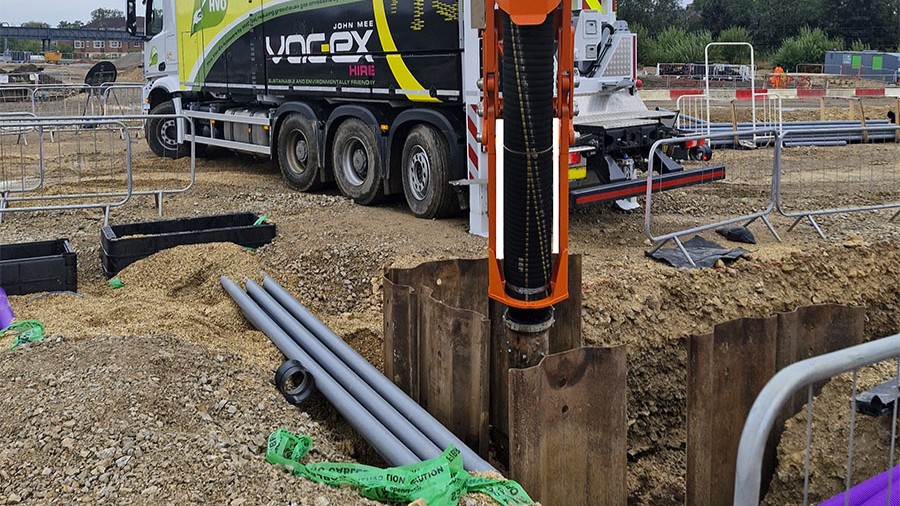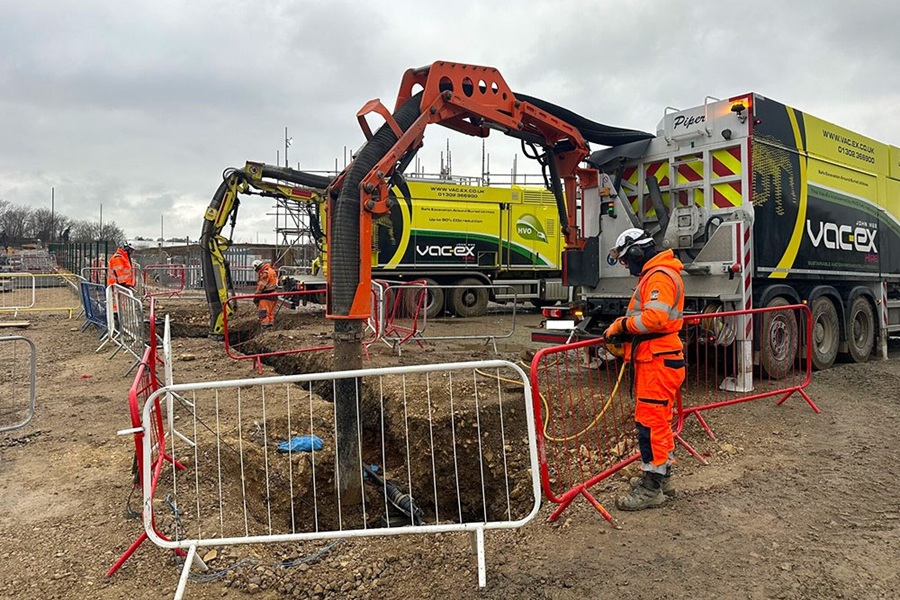Redefining site efficiency: Mobile excavation in tight access areas
Changing how we think about excavation on small sites is part of a trend in the industry towards smarter, greener development
DIGGING IN RESIDENTIAL neighbourhoods, bustling business districts, tiny alleyways, and sites with many utility lines presents unique challenges. These areas are unsafe and slow to work with, requiring huge construction equipment, which makes it difficult to complete. In limited spaces, projects must be planned and managed carefully to finish on time, under budget, and safely. To keep things running smoothly and protect neighbouring buildings, safe and effective excavation methods are even more vital, as more modern infrastructure is installed in densely populated areas.
Small places are ideal for a suction excavator. They use intense suction to extract soil without injuring nearby buildings and structures, unlike traditional excavation technologies. Heavy machines dug into the dirt before. This method works well in small spaces and requires accuracy. Suction excavators, which are small and portable, can access areas that are dangerous or hard to reach that other tools cannot. These little but powerful gadgets can modify the ground without harming the ecosystem. Remote control makes them more flexible, quieter, less destructive, and more precise than traditional, bulkier excavation equipment.

Small Devices That Can Do a Lot of Things
Mobile digging equipment offers a variety of utilisation options. These devices can access areas that are difficult to reach or closed off, setting a new standard for the adaptability of building sites. Due to their articulated booms, extensive hoses, and powerful control systems, they can perform very precise work even in busy areas.
Suction excavators are quite useful for maintaining cities, installing telecommunications, and keeping utilities in good working order. They can dig without harming pipes, wires, or other sensitive elements of buildings, allowing construction to continue. This level of accuracy makes projects safer and speeds up their completion by reducing the need for expensive redo and patching.
Making Workflow Better with as Few Problems as Possible
It’s not only how fast a website is that matters; it’s also how well it works. When digging in locations with restricted access, it can be challenging to keep traffic moving and avoid blocking public access. Mobile excavation equipment addresses this issue by being quieter and occupying less space. This approach is helpful when working at night or in areas with noise restrictions in the neighbourhood.
Real-time depth, pressure, and soil condition monitoring systems are helpful for operators. This plan, based on data, reduces mistakes made by people and improves the performance of machines. Additionally, it provides site managers with real-time information, enabling them to make better and faster decisions, which in turn boosts productivity and reduces downtime.

Movement For Smart And Creative Urban Excavation
Changing how we think about excavation on small sites is part of a trend in the industry towards smarter, greener development. Modern contractors, who often have limited space, are increasingly using mobile suction excavators. These solutions can persuade us to update old workflows because they are accurate, portable, and effective.
As cities grow larger and infrastructure needs increase, maintenance and extension tools must adapt. Mobile digging systems enable excavation even in restricted access areas. Such technology enables the development of new ideas, the implementation of changes, and improved performance with fewer resources.

